There’s a certain speckled trout fishing pattern that trips up inshore anglers during winter, and I call it the Pac-Man Pattern.
Yes, you may have seen it happen: fishermen are catching specks during fall without a problem, then it gets cold and all the sudden they’re not bringing home the bacon like they used to.
So, what happened? What is the Pac-Man Pattern? What conditions cause it to occur and how do you fish it?
This and more is what you will find in this guide and — if you use what’s taught here — then you will enjoy catching more speckled trout than those who do not.
So, to fully understand the Pac-Man Pattern, you and I must first look at how speckled trout feed during fall.
Recapping How Speckled Trout Feed During Fall
Some of the easiest speckled trout fishing people can do all year happens during the fall. This is for two reasons:
These two forces collide to make fishing that’s not just incredible, but also predictable and well within the reach of inshore anglers.
Yes, catching speckled trout during fall is easy: all you really have to do is fish where white shrimp become concentrated as they exit the marsh.
Wherever they are flowing is where you can catch a lot of speckled trout. It’s not rocket science.
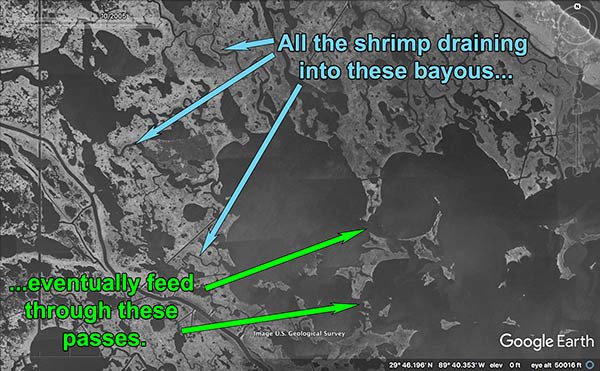
Finding specks feeding on white shrimp during fall is pretty easy.
There’s just so many white shrimp that specks don’t really feed on anything else.
Most people understand this concept and take advantage of it accordingly, while others still catch fish anyway because the action is literally that good.
But, this white shrimp migration does not last all year. It really only lasts during fall then — once the migration is over — the shrimp are gone and speckled trout feed on something else.
As a result, they’re no longer in the same spots that were productive during fall.
This is because the new bait they’re feeding on isn’t migrating out of the marsh.
These are bait like violet gobies, cocahoes, potbelly minnows, bay anchovies and more. These behave much differently from fall white shrimp and, consequently, cause speckled trout to behave differently.
Let's Stay Focused Here...
Now, I can dive into detail on everything that happens during winter which influences speckled trout behavior, but that’s outside the scope of this guide. Instead, you’ll find that in my course, Winter Fish Location.
Here and now, I’d like to detail how these winter fin fish are different from the fall white shrimp and how that affects where you fish.
How Winter Bait Fish Are Different From Fall White Shrimp
The chief difference between the forage that speckled trout find during winter from that of fall is their location.
Location! Location! Location!
A white shrimp migrating to the Gulf of America is going to be in a very different place from a violet goby who’s staying put and living daily life.
We find the highest concentrations of fall white shrimp in places like:
But violet gobies and potbelly minnows are found in places like:
The next key difference is whether they are concentrated or not.
Fall white shrimp can become extremely concentrated, causing speckled trout to become concentrated as well.
This results in the kind of “one stop shop” you see on my YouTube channel, meaning I catch a limit of speckled trout in one spot.
This is very easy to do during fall, but not always during winter.
And that’s because the kind of bait fish I’ve described are not always concentrated.
It’s possible they can be spread out. When they do this, the speckled trout can also spread out.
This changes where you cast a line.
But not everyone gets that memo.
So, most inshore anglers go back to where they’ve had successful fishing trips during fall and don’t catch anything and don’t know why.
Some are able to get a good report from a fishing buddy and move to where specks are feeding, but they still fail to understand why.
If they knew then they’d be able to identify additional fishing spots and truly pattern speckled trout.
So, now you understand that the location of where we fish for speckled trout changes when winter arrives.
But, if you’re thinking ahead, you've probably already figured out that what else changes is how we fish for speckled trout.
Let’s take a closer look at that:
How We Fish For Winter Speckled Trout Feeding On Bait Fish
Recall that during fall it’s easy to do a “one stop shop” for speckled trout because bait are concentrated.
Well, I would be lying if I said this doesn’t happen during winter. Yes, sometimes speckled trout can be schooled up in one spot and catching a limit is easy.
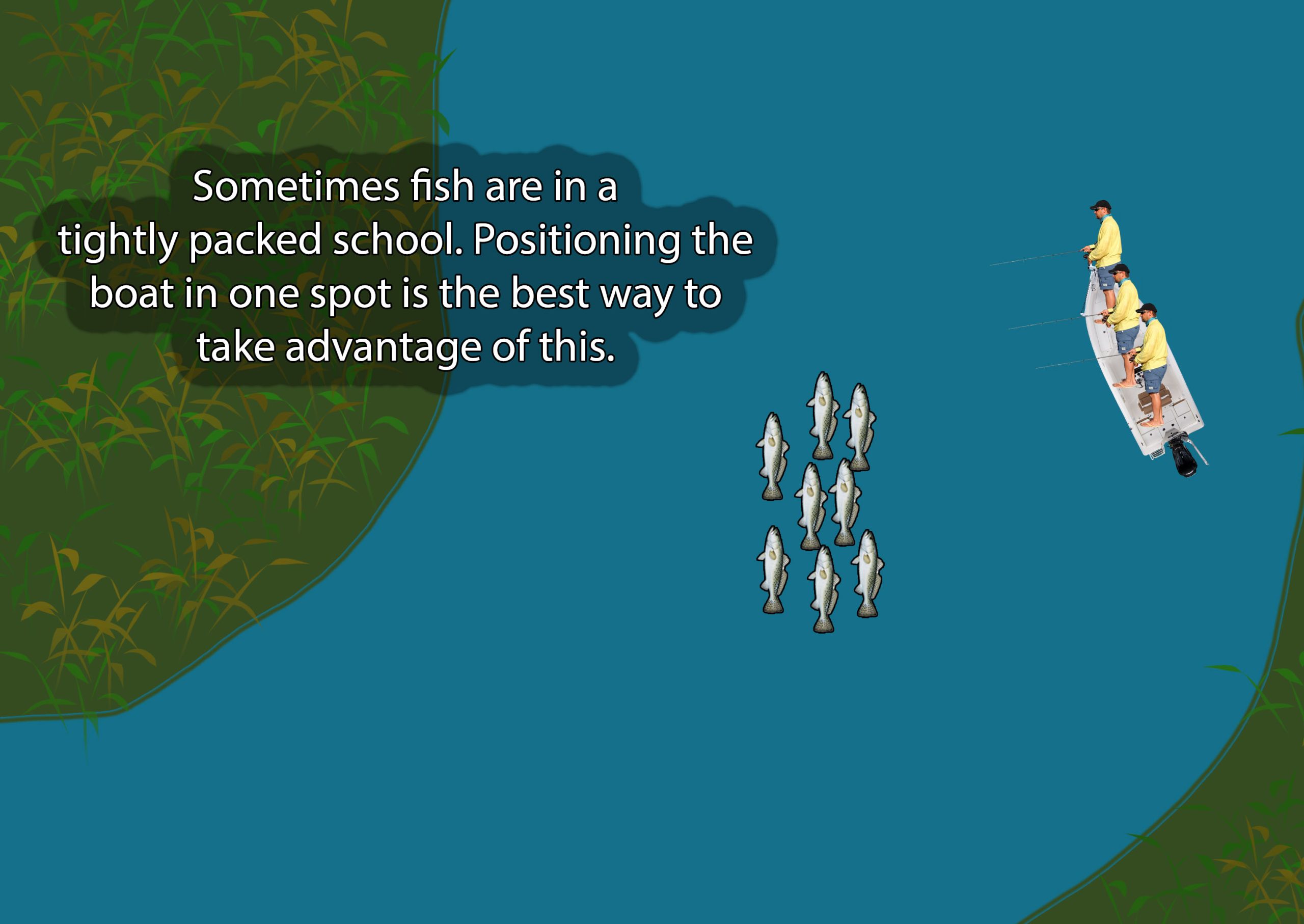
But some of the better fishing action is actually spread out across an area. This is because, like I mentioned earlier, the bait is spread out.
This changes how you fish for speckled trout.
If you anchored in one spot and began casting around, you may catch a trout or two, but then that’s it. No more action.
If it were fall, leaving for a new spot to find the specks piled up would be a good decision. But during winter, not so much.
What you would want to do is move down the spot you’re fishing. You’re going to want to reposition the boat where there will potentially be another trout or two, and catch those.
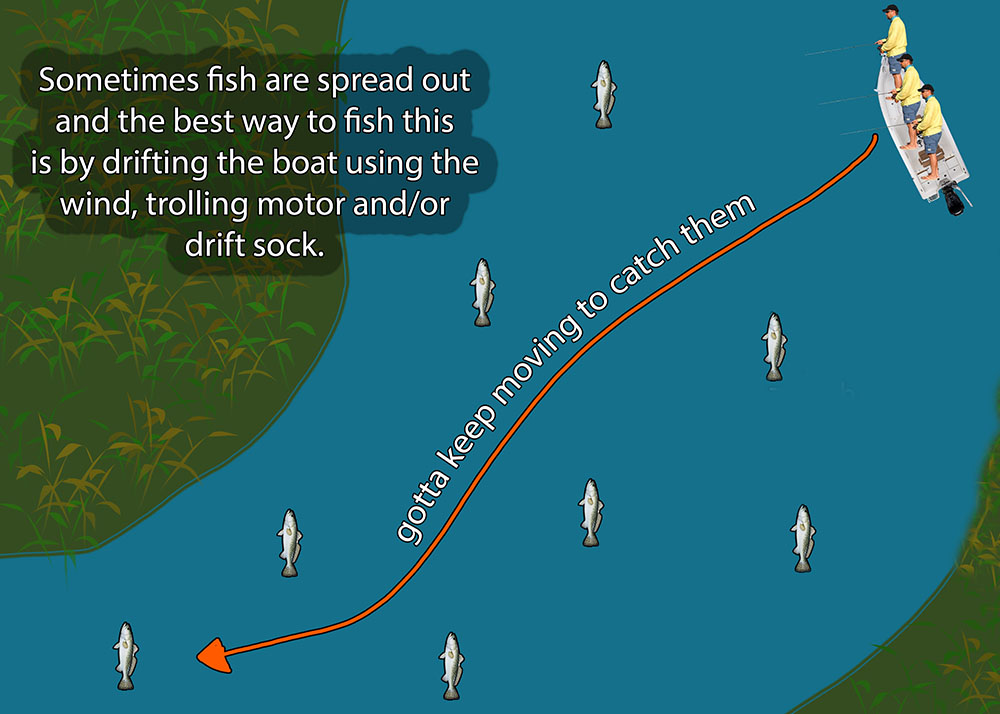
Then, rinse and repeat.
The best way to go about doing this is to use one of the following tools:
While repositioning the boat works, it’s better to cover water with one of those tools.
This is where the idea of the Pac-Man Pattern comes into play:
Think of the classic Pac-Man arcade game. Pac-Man’s goal is to eat pellets, and as many as possible.
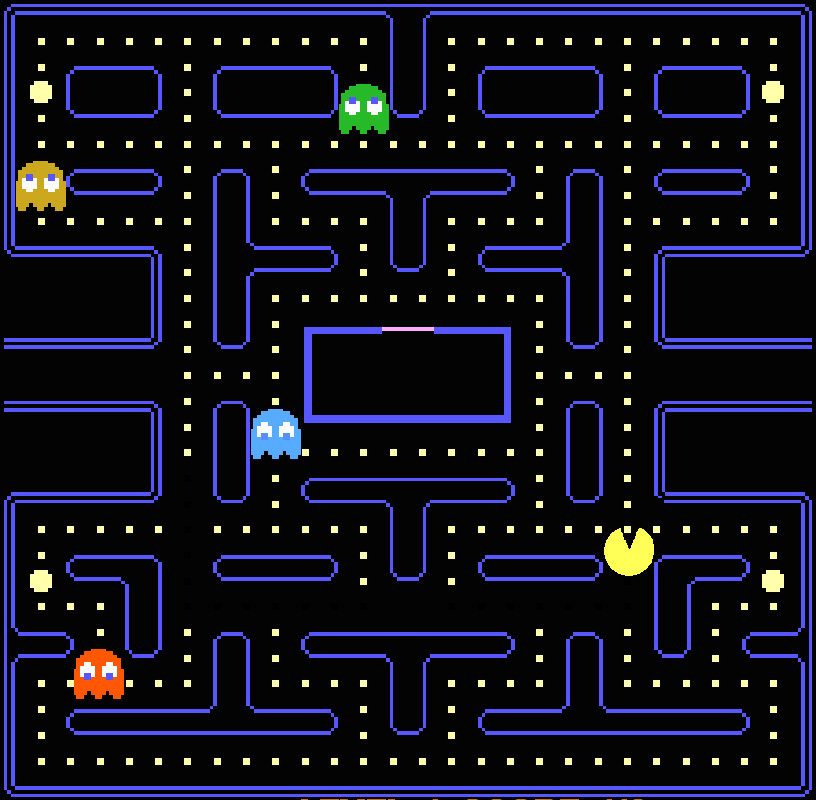
Note that the pellets are not concentrated in one spot. In order for Pac-Man to eat them all, he has to keep moving.
Well, in this analogy, you are Pac-Man, and speckled trout are pellets.
When speckled trout get scattered down a rock pile or across an oyster reef, anchoring in one spot is not going to catch a bunch of them.
You will want to keep moving, just like Pac-Man.
Anglers who fail to do so think that they’re not on the fish and spend all day running trying to find them.
But, in this case, the fish aren’t the problem, they are.
So, now that we’ve identified what the Pac-Man Pattern is, let’s take a closer look at some examples of where it occurs and how best to fish it.
Pac-Man Pattern Examples
Community holes like the Trestles in Lake Pontchartrain and the rock piles in the Mississippi River Gulf Outlet are great examples of where the Pac-Man Pattern happens.
Now, it’s totally possible that the fishing can be so good in either of these locations that all you need to do is anchor and cast a line, but anglers who can fish on the move (like Pac-Man) will still catch fish when the action slows down.
Both of these locations have linear structure and/or cover. It is here you would want to use a trolling motor.
But a less obvious fishing spot that yields a Pac-Man Pattern would be a long and wide oyster reef.
Here you can use a trolling motor, but it sure is easier to let the wind or current do all that work for you, since there is nothing to bump into.
It’s at this point in time I like to use a drift sock to slow down the boat and get good presentations.
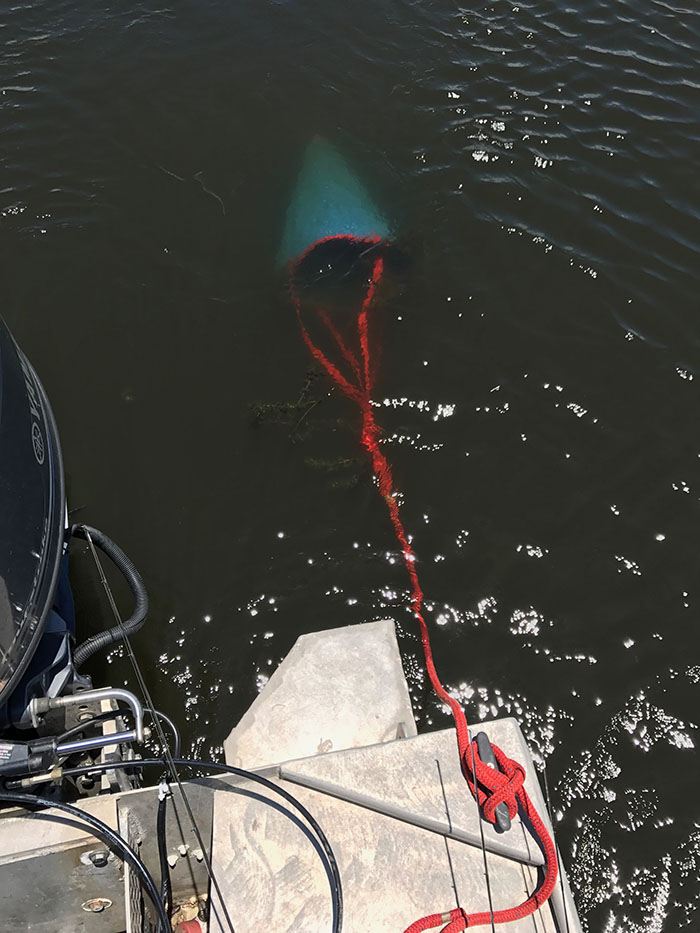
You can also use a shallow water anchor to “stick and pick”.
“Stick and pick” is a technique to cover wide areas of water. Here you let the boat drift, then anchor and begin fan casting around, then drift for a bit, then anchor and cast again.
You should use what works best for you and what fits the scenario.
Just keep in mind that when you use an anchor around an oyster lease you could be disturbing the bottom and damage the oysters being cultivated there.
It’s just something to keep in mind.
Now, I’d like to cover some additional thoughts and ideas I had while writing this guide about the Pac-Man Pattern:
When does the Pac-Man Pattern begin?
Look, as much as I put this in the context of winter fishing, you can find Pac-Man Patterns year-round.
That’s because speckled trout (or whatever you are targeting) will inevitably key on bait that’s spread out and not concentrated.
When you identify this, you will have a fishing spot all to yourself, as most people out there on the water don’t think to be this thoughtful.
I just put it here in the context of winter fishing because that change in where and how speckled trout feed really trips up inshore anglers as fall transitions into winter.
But another question I get a lot is, “When does the winter speckled trout pattern begin?” For me, that is when the water temperature stabilizes around 54 degrees Fahrenheit
What are some other examples of Pac-Man Pattern Locations?
So, we already covered obvious stuff like bridge pilings and rock piles, but somewhere else you want to try are grass flats, natural oyster reefs, tidal highways, artificial reefs and oil platforms.
Essentially, anytime you see fish coughing up bait that you know tends to spread out is when you want to try fishing the Pac-Man Pattern.
Which leads me to my next point:
Slow Down & Be Patient
Some times of the year it is a good choice to be a little aggressive and “run and gun” until you find the fish.
This isn’t always the case during winter. When water temps get really cold during winter, we see fish slow down.
As a result, you will want to slow down. You will want to slow down how quickly you cover water and how fast you fish.
A good example is this particular YouTube video where I was bouncing around trying to find a good speckled trout bite before settling down into a Pac-Man Pattern.
It was painfully slow, but I stuck with it and put together an "old school" limit of 25 speckled trout.
Where can I learn more?
If you enjoyed this guide then you may want to learn more about winter speckled trout fishing in Louisiana. If this is the case, then I encourage you to join my membership, LAFB Elite.
Once you do, you should get started with Inshore Fishing 101, as all my other courses build upon the foundational knowledge of that one.
Then, after that, knock out my newest course, Winter Fish Location.
And, of course, you should introduce yourself inside LAFB Elite’s Community, read fishing reports and get to know the other like-minded anglers you’ll find there.
Tight lines, and thanks for reading!

I really appreciate your kind words, Bruce. Thank you for making time to visit my site and leave a comment!
Love your articles and videos. You put a lot of information into them.
Thank you for sharing.
You’re welcome! Thanks for visiting, Rodney!
great information thanks